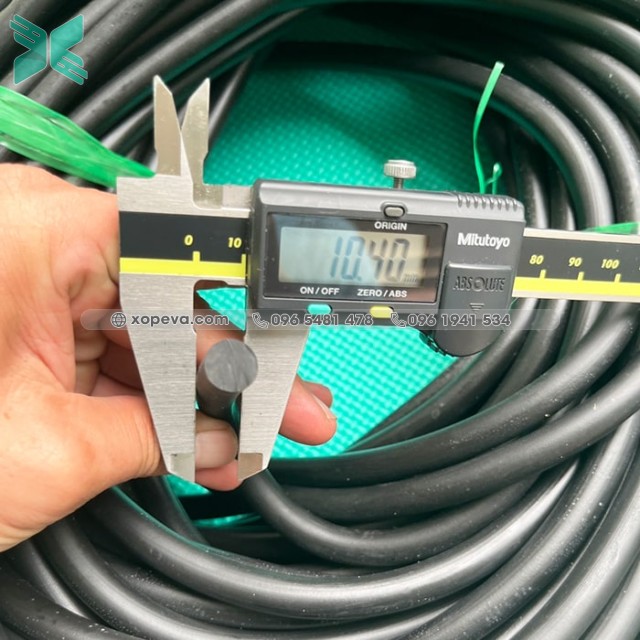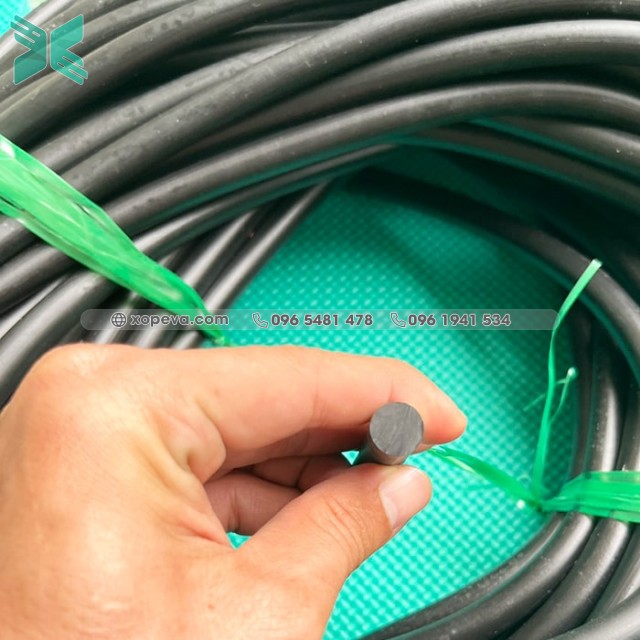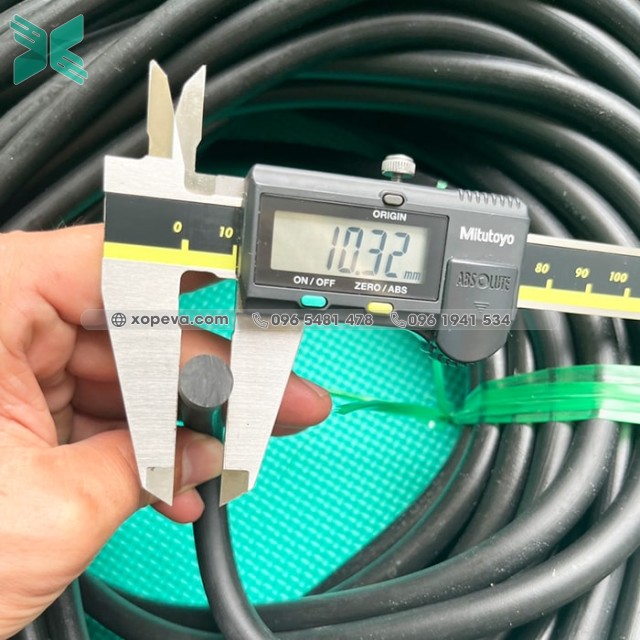







| Material: | CR |
| Size: | 10mm |
| Hardness (Shore A): | 20-35° |
| Minimum length: | 50m |
| Full coil length: | 100m |
| Colour: | Black |
| Estimated delivery: | 6 to 8 working days |
Round CR Rubber Gaskets
Round CR rubber gaskets are a type of rubber gasket made from chloroprene rubber (CR) material. CR is a synthetic rubber with oil resistance, flame resistance, and high-temperature resistance properties.
Round CR rubber gaskets are commonly used in applications that require tight sealing, insulation, or electrical insulation. Designed in a round shape, these gaskets can be installed on circular surfaces or gaps to prevent leakage or transmission of fluids, gases, heat, or sound.
Round CR rubber gaskets have good elasticity and can withstand temperatures ranging from -40°C to approximately 100°C (depending on the specific composition of CR). This makes them suitable for various industrial applications, including automotive, machinery, electronics, medical equipment, and energy supply systems.
However, to have a clear understanding of the specific technical specifications of round CR rubber gaskets, such as size, hardness, abrasion resistance, and other technical requirements, it is recommended to consult specific product types from specialized rubber manufacturers or suppliers.
Round CR rubber gaskets are one of the popular and widely used rubber gaskets in many industries. Key characteristics of round CR rubber gaskets include flexibility, resilience, and good heat resistance.
Here is some basic information about round CR rubber gaskets:
1. Material Properties: Round CR rubber gaskets are made from CR (chloroprene rubber), also known as neoprene. CR is a synthetic rubber with good oil resistance, heat resistance, and flame resistance. It also has weather resistance and ozone resistance, making round CR rubber gaskets suitable for outdoor applications or in harsh environmental conditions.
2. Applications: Round CR rubber gaskets are used in various industries such as automotive, marine, electronics, industrial machinery, medical equipment, and many other fields. They are used to create a tight barrier between surfaces, preventing leakage of fluids, gases, dust, heat, or sound. Round CR rubber gaskets can also be used as sealing rings, sealing washers, or vibration dampers.
3. Flexibility and Resilience: Round CR rubber gaskets have high flexibility and resilience, allowing them to easily compress and stretch to create a tight seal between two surfaces. This helps minimize leakage and ensure sealing performance for applications that require high sealing effectiveness.
4. Size and Hardness: Round CR rubber gaskets can be produced in various sizes and different hardness levels to suit specific application requirements. Specifications such as inner diameter, outer diameter, thickness, and gasket hardness can be customized to meet the specific needs of customers. Typically, the size of round CR rubber gaskets can be measured by the inner diameter and outer diameter, while the gasket thickness is also determined. The hardness of the gasket is measured using the Shore unit (Shore hardness), commonly represented as Shore A or durometer hardness.
Round CR rubber gaskets are available in many common sizes, ranging from small to large, and can be customized to meet specific requirements. For example, gaskets with inner diameters ranging from 5mm to 500mm and outer diameters from 10mm to 600mm may be available in the market. However, different sizes can also be manufactured based on specific requirements.
The hardness of round CR rubber gaskets can be measured from 40 to 90 Shore A, with common values such as 50, 60, 70, and 80 Shore A. This hardness affects the compression characteristics, stretchability, and resilience of the gasket.
In addition to size and hardness, round CR rubber gaskets can also be customized for color and other features such as abrasion resistance, oil resistance, chemical resistance, ozone resistance, and higher-temperature resistance.
To select the appropriate round CR rubber gaskets, customers should consult reputable manufacturers or suppliers for detailed technical specifications and choose products that meet the specific application requirements
| Specifications | |
| Thickness | |